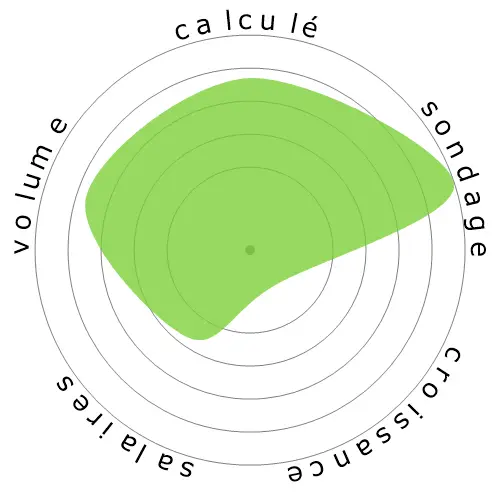Plombiers, Monteurs de tuyaux et Monteurs de systèmes de vapeur




Les gens ont également vu
Risque d'automatisation calculé
Risque Faible (21-40%) : Les emplois à ce niveau présentent un risque limité d'automatisation, car ils nécessitent un mélange de compétences techniques et centrées sur l'humain.
Plus d'informations sur ce que représente ce score et comment il est calculé sont disponibles ici.
Sondage utilisateur
Nos visiteurs ont voté qu'il y a peu de chances que cette profession soit automatisée. Cette évaluation est davantage soutenue par le niveau de risque d'automatisation calculé, qui estime 22% de chances d'automatisation.
Que pensez-vous du risque de l'automatisation?
Quelle est la probabilité que Plombiers, Monteurs de tuyaux et Monteurs de systèmes de vapeur soit remplacé par des robots ou l'intelligence artificielle dans les 20 prochaines années ?
Sentiment
Le graphique suivant est inclus chaque fois qu'il y a un nombre substantiel de votes pour rendre les données significatives. Ces représentations visuelles affichent les résultats des sondages utilisateurs au fil du temps, fournissant une indication significative des tendances de sentiment.
Sentiment au fil du temps (annuellement)
Croissance
On s'attend à ce que le nombre de postes vacants pour 'Plumbers, Pipefitters, and Steamfitters' augmente 5,6% d'ici 2033
Emploi total, et estimations des offres d'emploi
Les prévisions mises à jour sont attendues 09-2025.
Salaires
En 2023, le salaire annuel médian pour 'Plumbers, Pipefitters, and Steamfitters' était de 61 550 $, soit 29 $ par heure.
'Plumbers, Pipefitters, and Steamfitters' ont été payés 28,1% de plus que le salaire médian national, qui était de 48 060 $
Salaires au fil du temps
Volume
À partir de 2023, il y avait 436 160 personnes employées en tant que 'Plumbers, Pipefitters, and Steamfitters' aux États-Unis.
Cela représente environ 0,29% de la main-d'œuvre employée à travers le pays
Autrement dit, environ 1 personne sur 348 est employée en tant que 'Plumbers, Pipefitters, and Steamfitters'.
Description du poste
Assembler, installer, modifier et réparer des canalisations ou des systèmes de tuyauterie qui transportent de l'eau, de la vapeur, de l'air ou d'autres liquides ou gaz. Peut installer des équipements de chauffage et de refroidissement et des systèmes de contrôle mécanique. Comprend les monteurs de gicleurs.
SOC Code: 47-2152.00


Commentaires
Leave a comment
TLDR
I don’t think we have enough of the right metals unearthed on this planet for us to make enough batteries that plumbing is at risk. Also there are a great many other jobs to likely be replaced by robots because they are either critical or profitable. There are also energy/power concerns at that scale of workforce unlikely to be solved soon enough within 20 years.
manual skilled jobs will be hard to replace but they will evolve
Laissez un commentaire sur cette profession